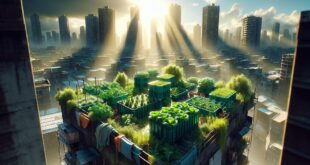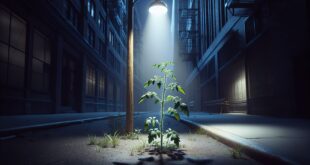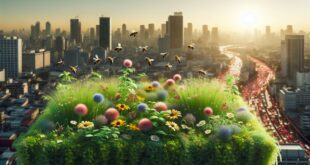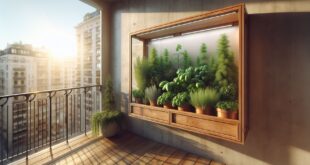Rain gardens transform urban environments by blending green infrastructure with natural processes to manage stormwater, enhance biodiversity, and foster community engagement. As living sponges, they mitigate flooding while rejuvenating neighborhoods with native flora and fauna. These spaces harmonize human habitats with nature, demonstrating resilience and sparking a ripple of environmental stewardship.
Read More »Sustainable Sanctuaries
DIY Wind Turbines: Harnessing Wind Energy in the City
Urban wind patterns offer unique challenges and opportunities for harnessing wind power. Understanding how buildings and natural features shape air currents can lead to effective and sustainable energy solutions in cityscapes. Selecting the right wind turbine, considering factors like type, size, and material, is crucial in transforming urban areas into renewable energy hubs. With proper planning and maintenance, wind turbines can seamlessly integrate into the urban environment, contributing significantly to a sustainable future.
Read More »The Role of Urban Farms in Food Security
Urban agriculture weaves food security, ecological repair, and community agency into the urban fabric—quietly challenging broken systems and sparking regeneration in unlikely places.
Read More »The Impact of Light Pollution on Urban Gardens
Artificial light disrupts plant rhythms and confuses pollinators, quietly undermining urban agriculture. From spindly stems to missed pollination, the glow of night carries invisible consequences — ones that accumulate across courtyards, rooftops, and community plots.
Read More »Urban Homesteading: Skills Every City Dweller Should Learn
Urban homesteading reclaims food, waste, and broken things as sources of connection and resilience—transforming tiny spaces into living systems. From windowsill gardens to worm bins and toolkits, sustainability thrives in the cracks where creativity meets care.
Read More »The Benefits of Green Roofs in Urban Sustainability
Green roofs transform urban landscapes by cooling buildings, managing stormwater, and restoring biodiversity—all while offering long-term savings and resilience. These living rooftops weave nature back into city life, challenging how infrastructure is built, valued, and shared.
Read More »Aquaponics Systems for Urban Homes: Fish and Veggies Together
Aquaponics transforms compact urban spaces into self-sustaining ecosystems where fish and plants thrive together. Rooted in ancient practices, this symbiotic method blends nature, rhythm, and modern design—inviting balance, care, and a deeper connection to food and environment.
Read More »The Ethics and Practicalities of Foraging in Urban Environments
Urban foraging walks a delicate line between nourishment and legality, ecology and contour, risk and reciprocity. Beneath the sidewalk cracks and abandoned lots lies a complex dance of law, soil memory, and collective responsibility—where every harvest carries more than just flavor.
Read More »Building a Greenhouse on Your Urban Balcony
Choosing the right balcony greenhouse means more than maximizing space — it's about aligning structure, climate, and rhythm with intention. From cold frames to vertical setups, design choices transform tight urban corners into thriving, sustainable gardens that echo the pulse of nature and home alike.
Read More »The Importance of Native Plants in Urban Landscaping
Native plants offer more than beauty—they revive ecosystems, support pollinators, and turn fragmented urban spaces into living, resilient systems. Rooted in place and purpose, they quietly transform cityscapes into biodiverse habitats, seeding renewal where concrete once silenced nature.
Read More » DS Haven In Light Of Things
DS Haven In Light Of Things









